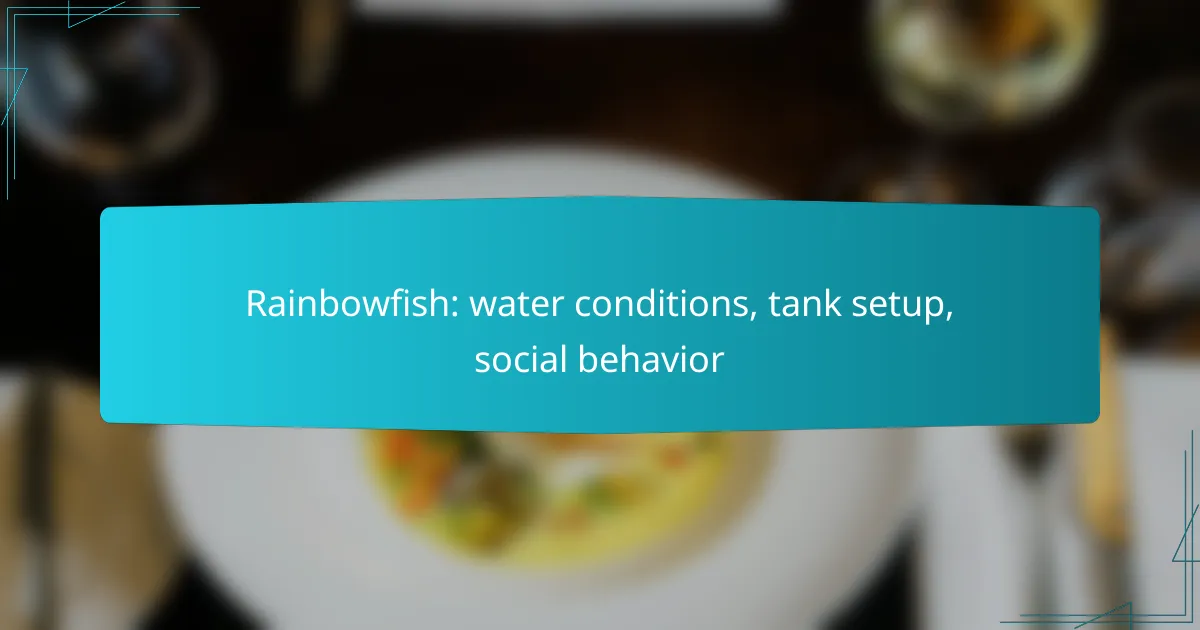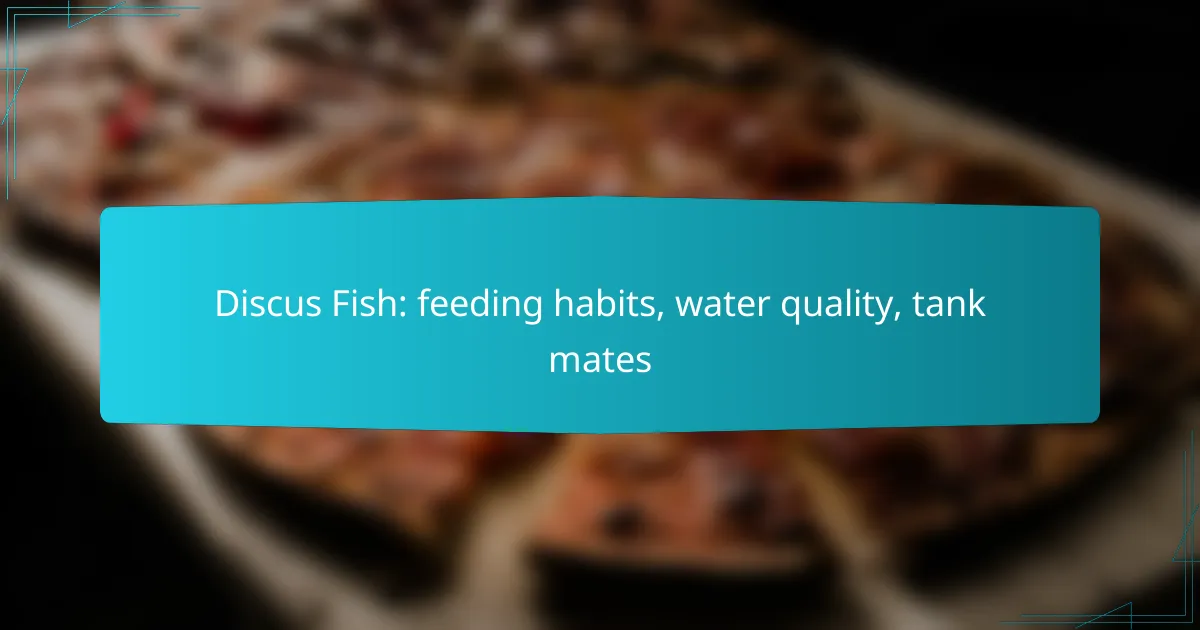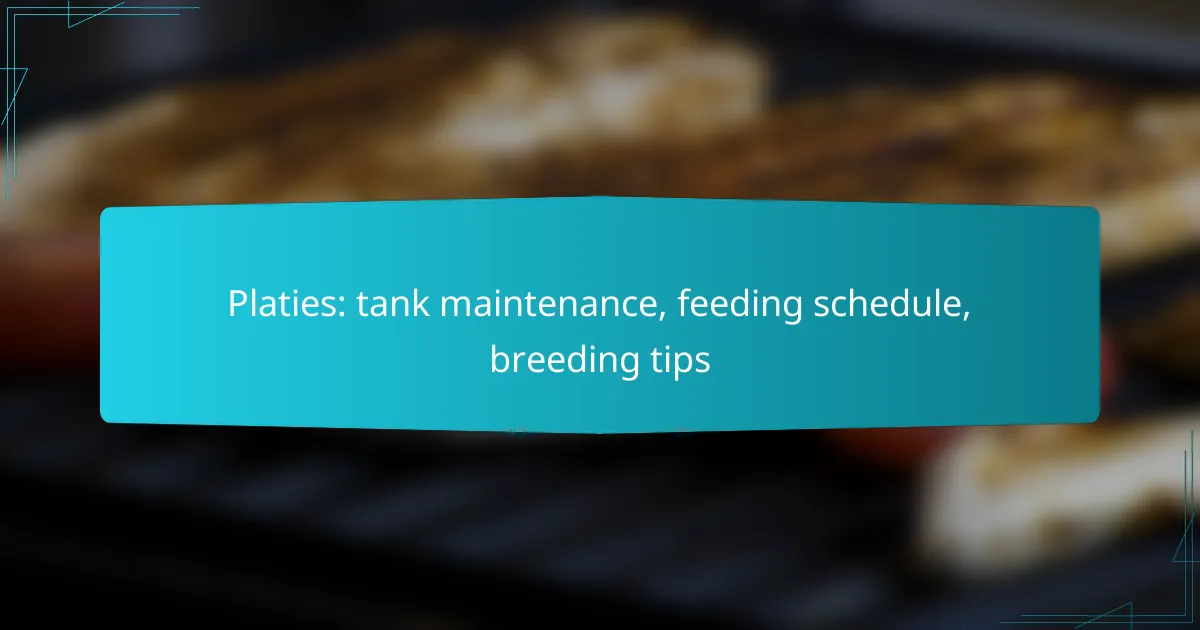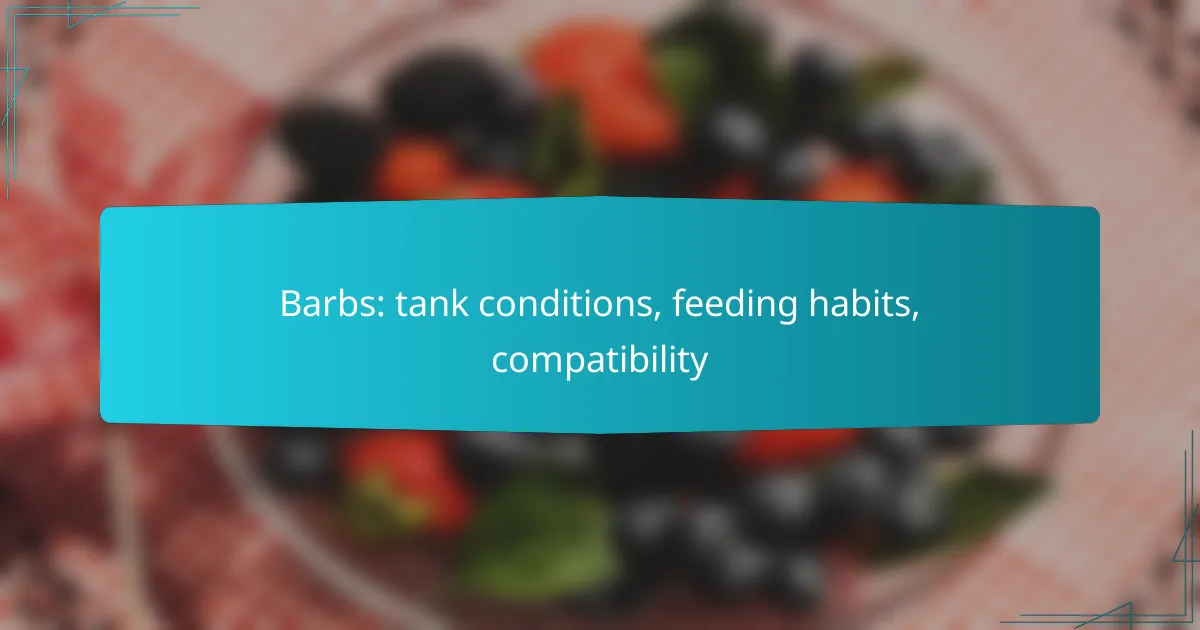Rainbowfish are vibrant and active freshwater fish that require specific water conditions, including a stable temperature, appropriate pH level, and hardness for optimal health. A well-planted tank with ample swimming space is essential for their setup, promoting a natural environment where they can thrive. These fish are social creatures that flourish in groups, exhibiting peaceful behavior that enhances their well-being and reduces stress in captivity.

What are the ideal water conditions for Rainbowfish?
The ideal water conditions for Rainbowfish include a specific temperature range, pH level, and hardness. Maintaining these parameters is crucial for their health and well-being in an aquarium setting.
Temperature range: 24-28°C
Rainbowfish thrive in a temperature range of 24-28°C. Keeping the water within this range promotes optimal metabolic function and overall vitality.
Use a reliable aquarium heater to maintain consistent temperatures, as fluctuations can stress the fish. Regularly check the temperature with an accurate thermometer to ensure stability.
pH level: 6.5-7.5
The pH level for Rainbowfish should be maintained between 6.5 and 7.5. This slightly acidic to neutral range mimics their natural habitat, promoting healthy behavior and breeding.
Test the water regularly with a pH kit, and adjust as necessary using pH buffers or natural methods like driftwood. Avoid sudden changes in pH, as they can be harmful to the fish.
Hardness: 5-15 dGH
Rainbowfish prefer water hardness between 5-15 dGH. This range supports their physiological needs and helps prevent stress-related issues.
Monitor water hardness using a test kit, and if adjustments are needed, consider adding minerals or using reverse osmosis water to dilute hardness. Consistency is key to keeping your fish healthy and vibrant.

How to set up a tank for Rainbowfish?
Setting up a tank for Rainbowfish requires careful consideration of size, substrate, and plants to create a suitable environment. These fish thrive in well-planted tanks with ample swimming space and stable water conditions.
Tank size: minimum 20 gallons
A minimum tank size of 20 gallons is essential for keeping Rainbowfish, as they are active swimmers and need space to thrive. Larger tanks, such as 30 gallons or more, are even better, allowing for more fish and a more stable environment.
When selecting a tank, consider the number of Rainbowfish you plan to keep. A good rule of thumb is to provide at least 10 gallons for every additional pair of fish to prevent overcrowding and stress.
Substrate: fine gravel or sand
For the substrate, fine gravel or sand is ideal for Rainbowfish tanks. These materials not only provide a natural look but also allow for easy cleaning and maintenance.
A substrate depth of around 1-2 inches is recommended, giving enough coverage for plants while ensuring that waste can be easily siphoned during water changes. Avoid sharp substrates that could harm the fish.
Plants: live plants for cover
Live plants are crucial in a Rainbowfish tank, as they provide cover and mimic the fish’s natural habitat. Plants like Java fern, Anubias, and Amazon sword are excellent choices, offering both aesthetic appeal and hiding spots.
Incorporate a variety of plant heights and densities to create a visually appealing environment. Ensure that the plants are well-established before introducing the fish to reduce stress and promote a healthy ecosystem.
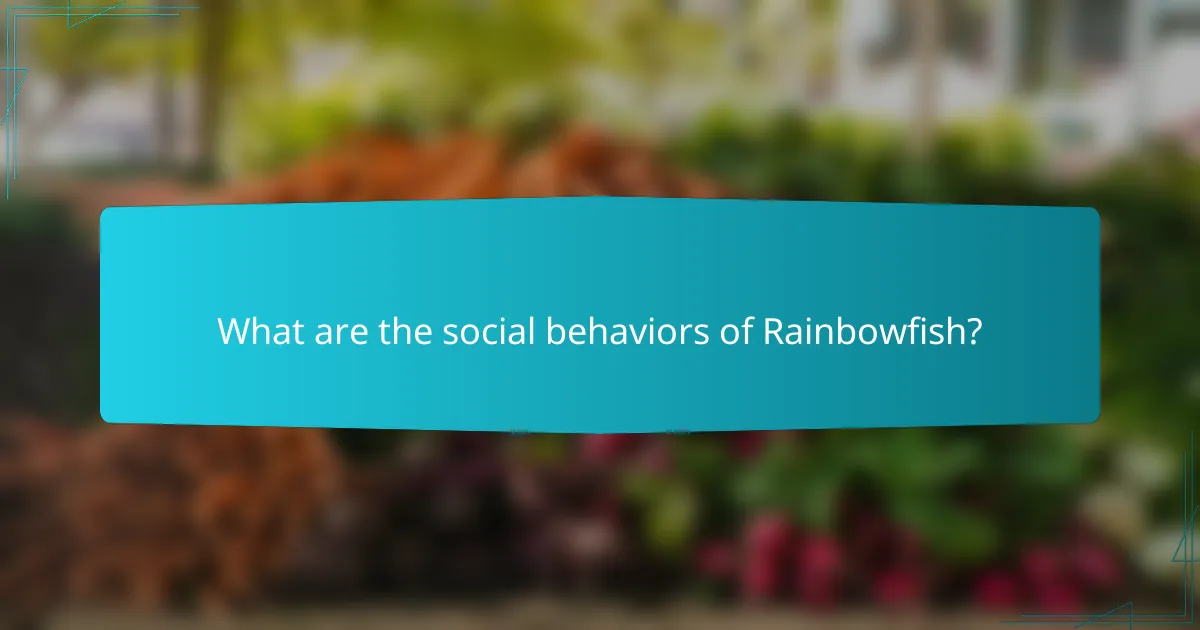
What are the social behaviors of Rainbowfish?
Rainbowfish exhibit strong social behaviors, thriving in groups and displaying peaceful interactions with their tank mates. Their natural inclination to form schools enhances their well-being and reduces stress in captivity.
Schooling behavior: prefer groups of 6 or more
Rainbowfish are inherently social creatures that prefer to be in groups of at least six individuals. Keeping them in larger schools not only mimics their natural habitat but also promotes their health and activity levels.
When housed in smaller numbers, Rainbowfish may become shy or stressed, leading to decreased vitality. A school of six or more allows for natural behaviors like swimming together and establishing social hierarchies.
Compatibility: peaceful with other species
Rainbowfish are known for their peaceful nature, making them compatible with a variety of other fish species. They generally coexist well in community tanks, provided the other species are similarly non-aggressive.
Ideal tank mates include small to medium-sized fish such as tetras, rasboras, and some types of catfish. Avoid aggressive or territorial species, as they can disrupt the harmonious environment that Rainbowfish thrive in.

What are the best tank mates for Rainbowfish?
The best tank mates for Rainbowfish are peaceful species that thrive in similar water conditions. Tetras and Corydoras are excellent companions, while aggressive fish should be avoided to maintain a harmonious environment.
Compatible species: Tetras, Corydoras
Tetras, such as Neon Tetras or Rummy Nose Tetras, are ideal tank mates for Rainbowfish due to their peaceful nature and similar water requirements. They prefer slightly acidic to neutral pH levels and can thrive in temperatures ranging from 22°C to 28°C.
Corydoras catfish are another compatible species, as they are bottom dwellers that help keep the substrate clean. They enjoy similar tank conditions and can coexist well with Rainbowfish, adding diversity to the aquarium.
Incompatible species: aggressive fish
Aggressive fish, such as Cichlids or certain types of Barbs, should be avoided as tank mates for Rainbowfish. These species can display territorial behavior and may stress or harm the more docile Rainbowfish.
When selecting tank mates, always consider the temperament and size of the fish. Keeping aggressive species can lead to conflicts, so it’s best to choose peaceful, community-friendly fish to ensure a stable aquarium environment.

What are the feeding requirements for Rainbowfish?
Rainbowfish require a varied diet that includes both flakes and live food to thrive. Providing a balanced diet is essential for their health, growth, and vibrant coloration.
Diet: omnivorous, flakes and live food
Rainbowfish are omnivorous, meaning they consume both plant and animal matter. A high-quality flake food designed for tropical fish should form the base of their diet, supplemented with live or frozen foods like brine shrimp, daphnia, or bloodworms. This variety ensures they receive the necessary nutrients for optimal health.
In addition to flakes and live food, incorporating vegetable matter such as spirulina or blanched spinach can enhance their diet. This helps mimic their natural feeding habits and supports digestive health.
Feeding frequency: 2-3 times daily
Rainbowfish should be fed 2 to 3 times daily to maintain their energy levels and overall health. Each feeding should consist of only what they can consume in a few minutes to prevent overfeeding and water quality issues.
Monitoring their feeding habits is crucial; if they consistently leave food uneaten, reduce the portion size. Regular feeding times can also help establish a routine, making it easier to observe their health and behavior in the tank.

What are the common health issues for Rainbowfish?
Rainbowfish can experience several health issues, with Ich and fin rot being the most prevalent. Addressing these problems promptly is crucial to maintaining their health and ensuring a thriving aquarium environment.
Ich: treatment with salt and heat
Ich, or Ichthyophthirius multifiliis, is a common parasitic infection in Rainbowfish characterized by white spots on the skin and fins. To treat Ich effectively, increase the water temperature gradually to around 28-30°C (82-86°F) and add aquarium salt at a concentration of about 1-3 grams per liter.
Monitor the fish closely during treatment, as prolonged exposure to high temperatures can stress them. Maintain this treatment for about 7-10 days, ensuring the salt is fully dissolved and the water remains clean to prevent further outbreaks.
Fin rot: improve water quality
Fin rot is often caused by poor water quality and can lead to frayed or disintegrating fins in Rainbowfish. To combat fin rot, regularly test the water parameters, aiming for stable pH levels between 6.5 and 7.5, and keep ammonia and nitrite levels at zero.
Perform regular water changes of about 20-30% weekly to maintain optimal conditions. Additionally, consider adding a water conditioner to remove harmful chemicals and promote a healthier environment for your fish.
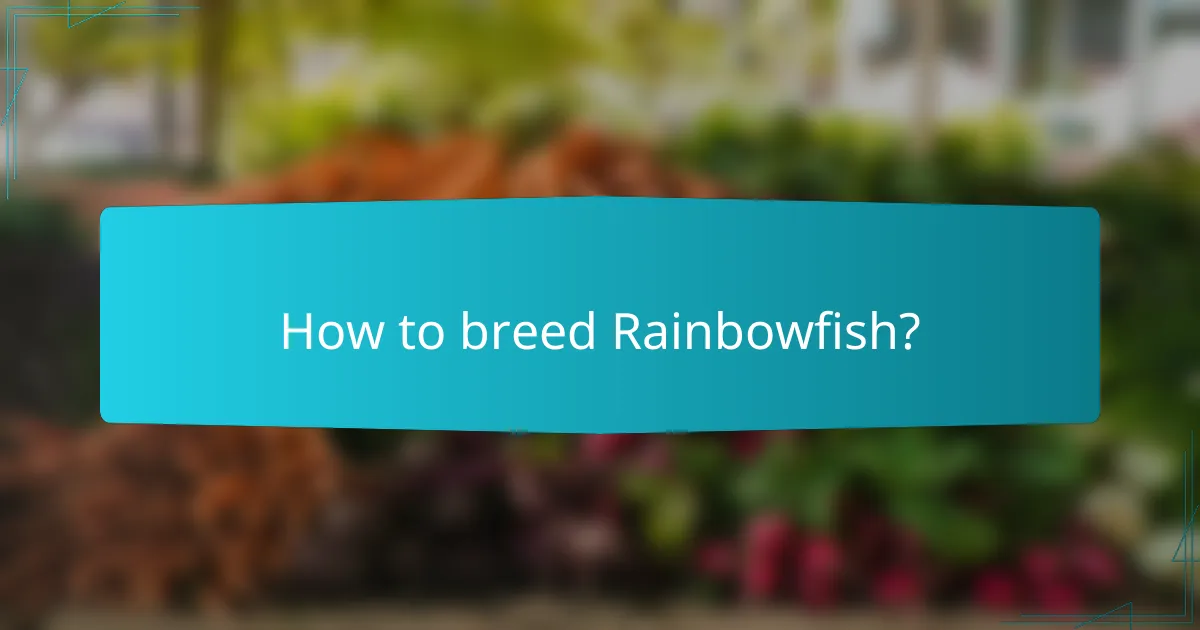
How to breed Rainbowfish?
Breeding Rainbowfish requires a suitable environment and specific care to ensure successful spawning and egg development. Key factors include providing a separate breeding tank and managing the post-spawning process carefully.
Breeding setup: separate tank with spawning mops
A separate breeding tank is essential for Rainbowfish to spawn effectively. This tank should be around 20 to 30 gallons, filled with soft, slightly acidic water, ideally between 6.5 and 7.5 pH. Adding spawning mops made from fine yarn or synthetic materials will encourage the fish to lay their eggs in a safe environment.
Ensure the tank has gentle filtration to prevent the eggs from being disturbed. Maintain a temperature around 24 to 28 degrees Celsius, as this range promotes breeding behavior. It’s also beneficial to include some floating plants to provide cover and mimic their natural habitat.
Egg care: remove adults after spawning
After the Rainbowfish have spawned, it’s crucial to remove the adult fish from the breeding tank. Adult Rainbowfish may eat their eggs, so separating them helps ensure a higher survival rate for the eggs. Typically, eggs will hatch within 5 to 10 days, depending on the water temperature.
During this period, maintain clean water conditions and monitor the temperature. Once the fry are free-swimming, you can start feeding them with finely crushed flakes or specialized fry food. Regular water changes will help keep the environment healthy for the young fish.

What are the signs of stress in Rainbowfish?
Signs of stress in Rainbowfish include erratic swimming patterns, loss of color vibrancy, and excessive hiding. Monitoring these behaviors can help ensure a healthy environment for these fish.
Erratic Swimming Patterns
Rainbowfish typically swim in a smooth, fluid manner. If they begin to dart around the tank or swim erratically, it may indicate stress due to poor water conditions, overcrowding, or aggressive tank mates.
Loss of Color Vibrancy
Healthy Rainbowfish display bright, vivid colors. A noticeable dulling of their coloration can signal stress, often resulting from inadequate water quality or illness. Regular water testing can help maintain optimal conditions.
Excessive Hiding
While Rainbowfish are generally social, excessive hiding can be a sign of stress. If they frequently retreat to corners or behind decorations, it may suggest they feel threatened or uncomfortable in their environment.






